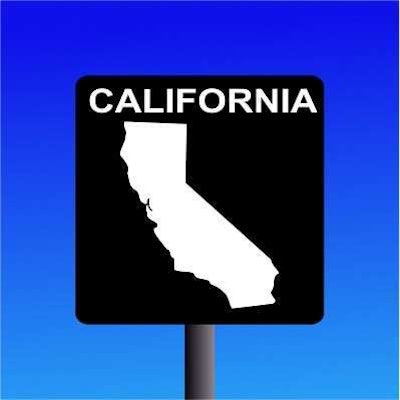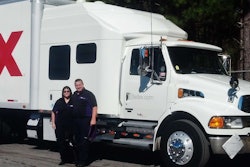
UPDATE: Following this report, CARB’s advisory on its “good faith effort” made clear it was not boosting the low-use exemption to 5,000-7,500 miles run within the state of California but rather looking at placing on top of the current 1,000-in-state-miles low-use exemption another for trucks run a total of 5,000-7,500 miles.
Find further coverage via the stories linked below.
**Forces against CARB low-use exemption change
**Podcast: CARB Compliance options not set in stone
**CARB public meetings clarify proposed rule amendments
![CARB’s enforcement strategy for its emissions regulations is increasingly involving tactics similar to what the FMCSA is doing with its CSA program, putting fear of liability implications into carrier customers. “The supply chain is starting to run scared,” Joe Rajkovacz, pictured, said of CARB’s growing enforcement. “Say a one-truck guy gets popped in California — if he leaves the state and never comes back, CARB’s not going to pursue him. But they’ll go after the shipper, the broker, the dispatcher. Shippers are now asking carriers for CARB compliance certificates…. [CARB is] trying to turn shippers/receivers/brokers into their unwitting enforcement agents.”](https://img.overdriveonline.com/files/base/randallreilly/all/image/2013/11/ovd.carb-nastc.png?auto=format%2Ccompress&fit=max&q=70&w=400) CARB’s enforcement strategy for its emissions regulations is increasingly involving tactics similar to what the FMCSA is doing with its CSA program, putting fear of liability implications into carrier customers. “The supply chain is starting to run scared,” Joe Rajkovacz, pictured, said of CARB’s growing enforcement. “Say a one-truck guy gets popped in California — if he leaves the state and never comes back, CARB’s not going to pursue him. But they’ll go after the shipper, the broker, the dispatcher. Shippers are now asking carriers for CARB compliance certificates…. [CARB is] trying to turn shippers/receivers/brokers into their unwitting enforcement agents.”
CARB’s enforcement strategy for its emissions regulations is increasingly involving tactics similar to what the FMCSA is doing with its CSA program, putting fear of liability implications into carrier customers. “The supply chain is starting to run scared,” Joe Rajkovacz, pictured, said of CARB’s growing enforcement. “Say a one-truck guy gets popped in California — if he leaves the state and never comes back, CARB’s not going to pursue him. But they’ll go after the shipper, the broker, the dispatcher. Shippers are now asking carriers for CARB compliance certificates…. [CARB is] trying to turn shippers/receivers/brokers into their unwitting enforcement agents.”Good news for owner-operators and fleets in the Eastern U.S. who run to California only occasionally or can keep their in-state miles below the 5,000-7,500 range per year: The California Air Resources Board is reportedly prepared to liberalize its low-use exemption for trucks that would otherwise require upgrade under its Truck & Bus Rule.
Sean Edgar of CleanFleets and Joe Rajkovacz of the California Construction Trucking Association, speaking at the annual meeting of the National Association of Small Trucking Companies in Nashville, Tenn., said that the low-use exemption was being boosted from a cap of 1,000 miles a year to somewhere in that 5,000-7,500 miles a year, per truck, range. The low-use exemption will be available through 2020.

Details, ultimately, could be in hand within days, Edgar said. Also, The “Good Faith Effort” will allow six months into 2014 for registered owners to replace or retrofit trucks — or to apply for loans and/or grants to enable such. That provision, Edgar added, would allow for the “opportunity for the old truck to operate for the first six months [of 2014] in California provided things are in place.”
Taking advantage of the low-use exemption wouldn’t be without its hassles, Edgar said. Owners would need to report vehicle, engine and owner information via registration with CARB — keep your eyes out for the final guidance from CARB, he said, and any deadlines for registering that could be within 60-90 days.
After registering, said Edgar, a certificate would then go into the truck for roadside verification, and “IFTA records will be reviewed if a company is audited.”
Owner-operators leased to larger fleets “can exercise this option themselves, but the responsibility for the mileage will fall on the fleet,” Rajkovacz said.
Rajkovacz called the 11th-hour move by CARB a “huge give to industry in the Eastern part of the United States,” though he added it was driven primarily by in-state politics. Many of the CCTA’s members — mixer operators, for instance, who run very low mileage, also stand to benefit.
Click here to check your compliance in the state, relative to your truck’s year model.














